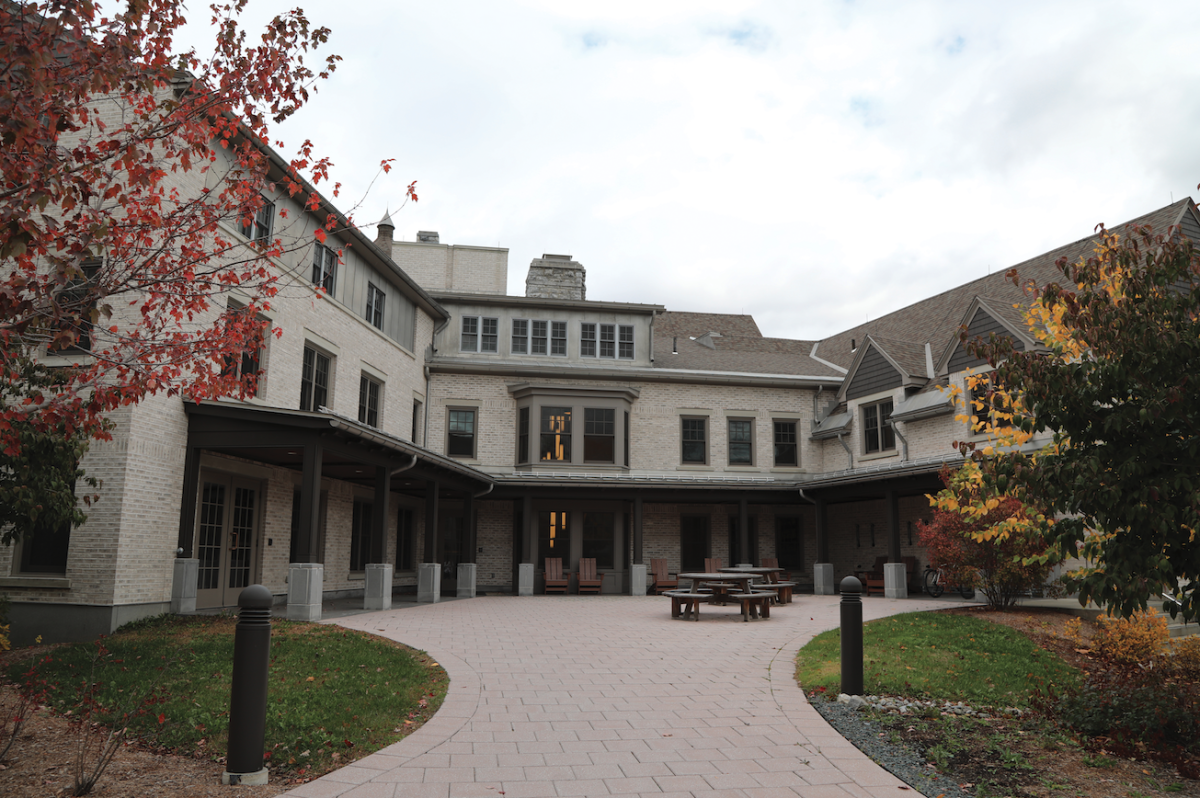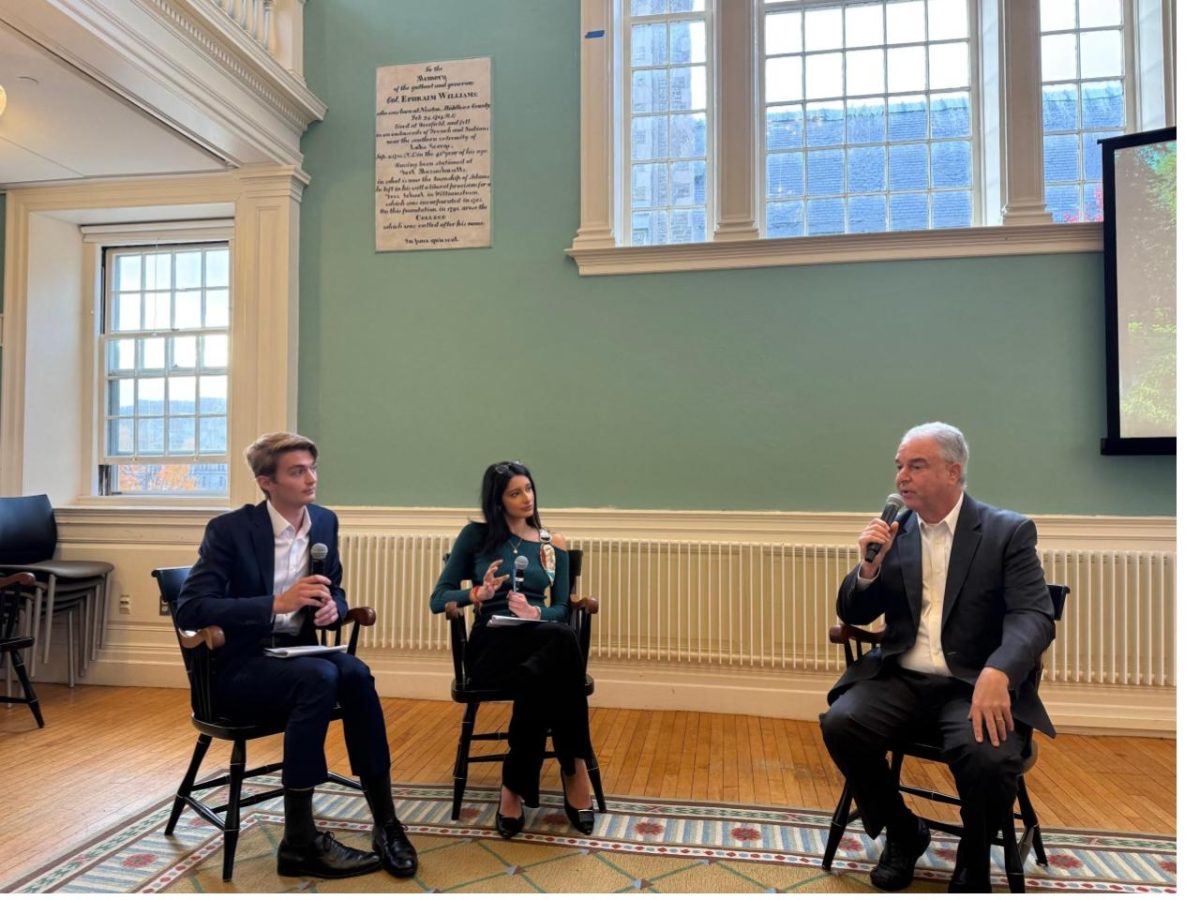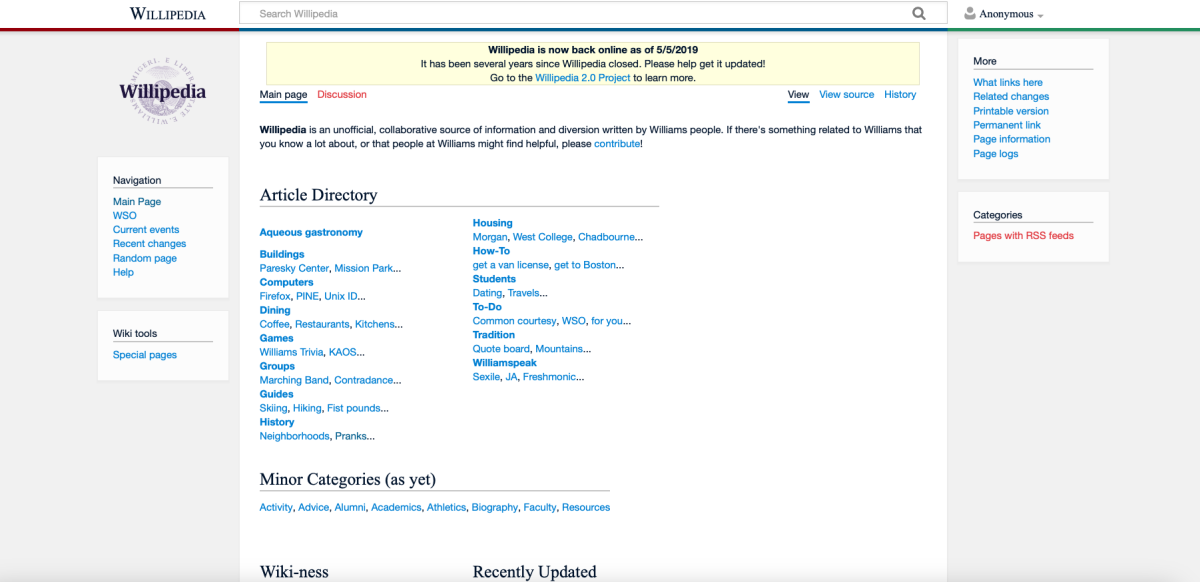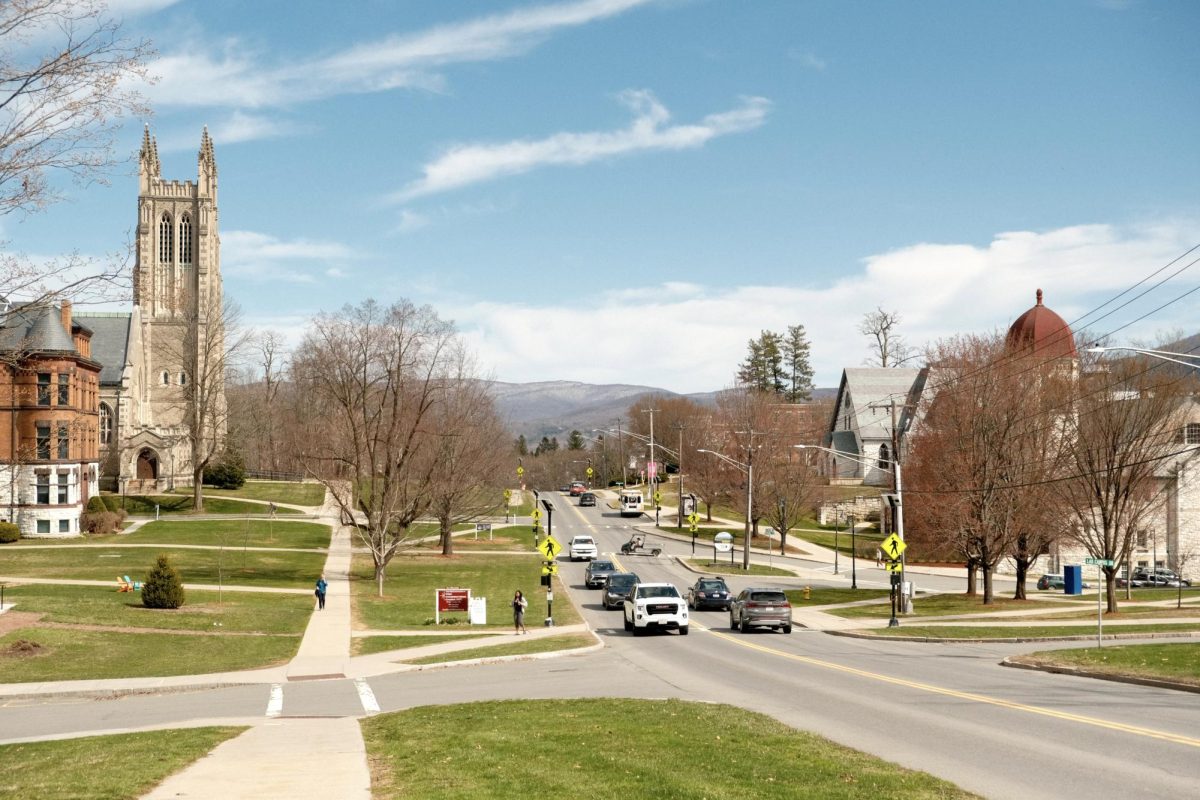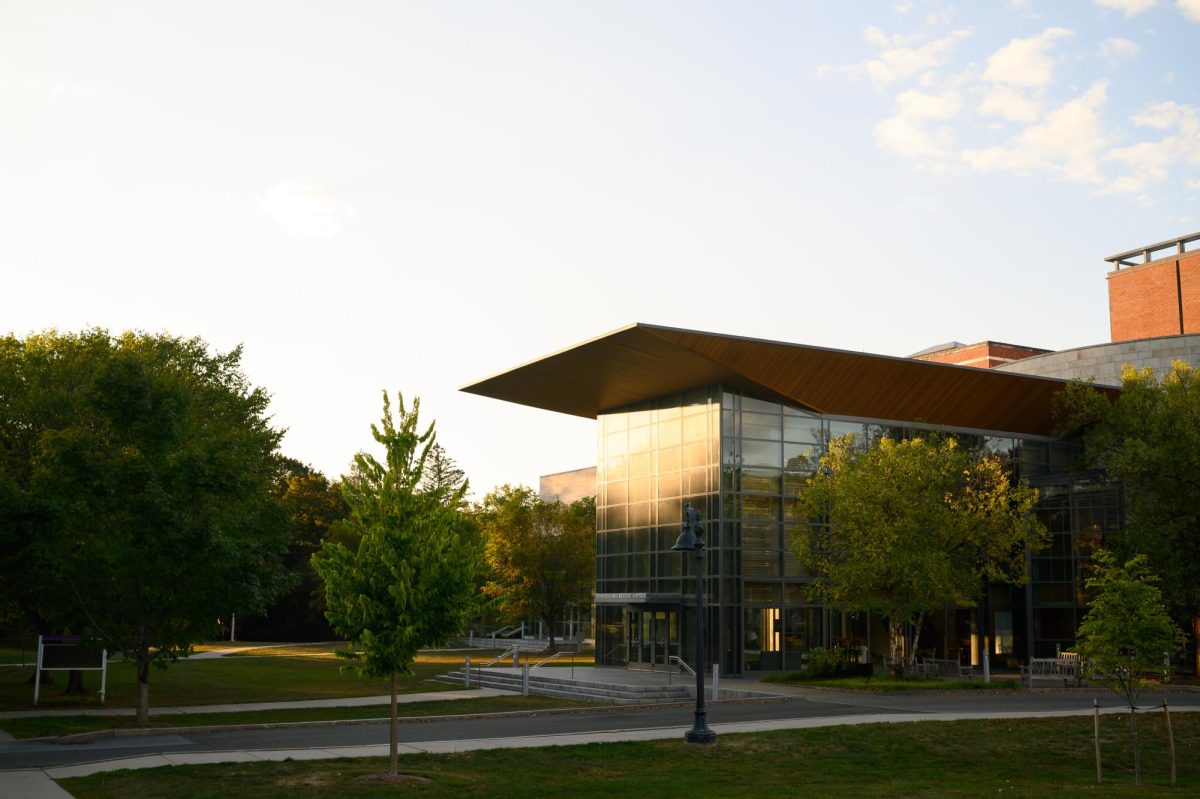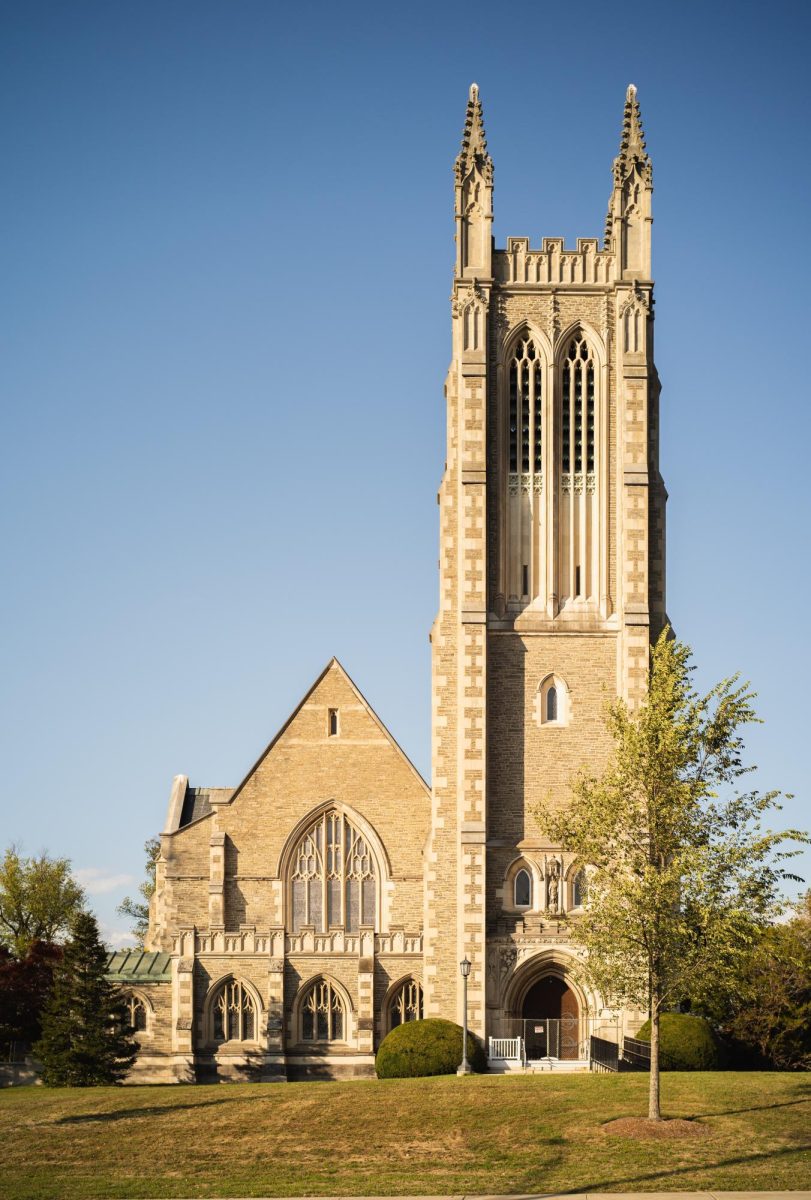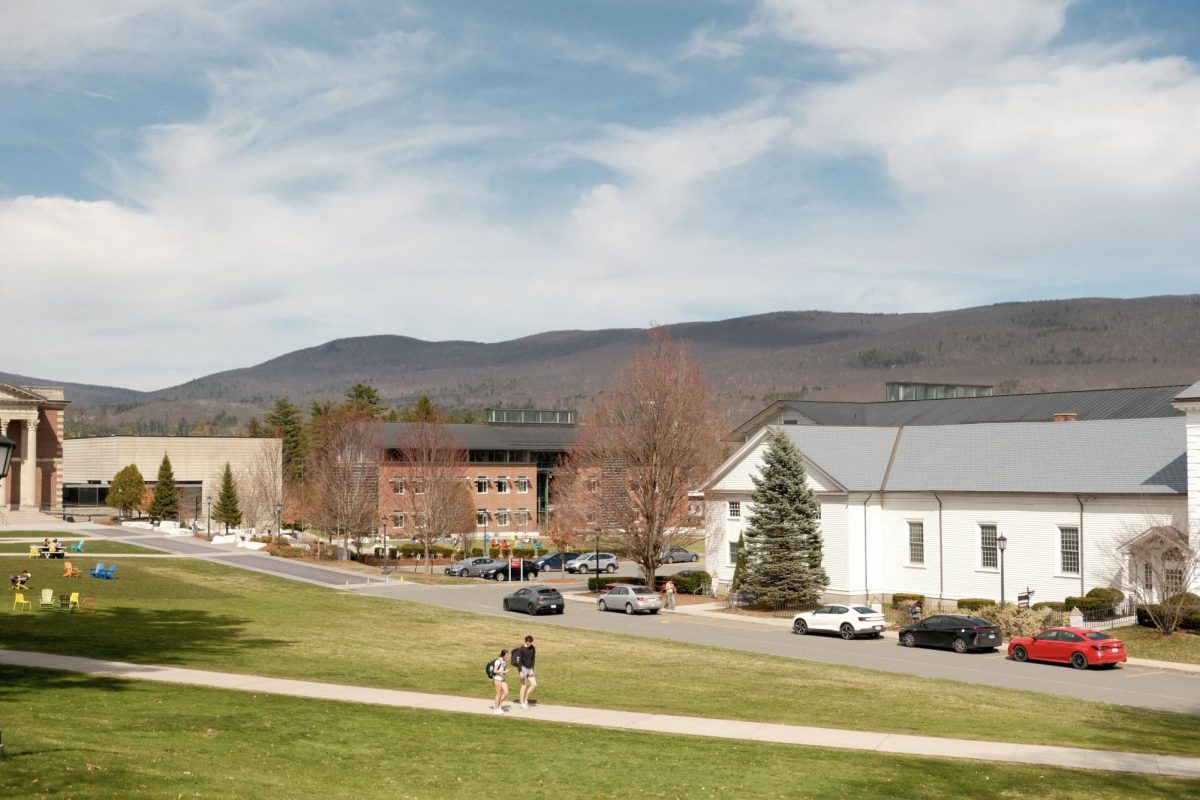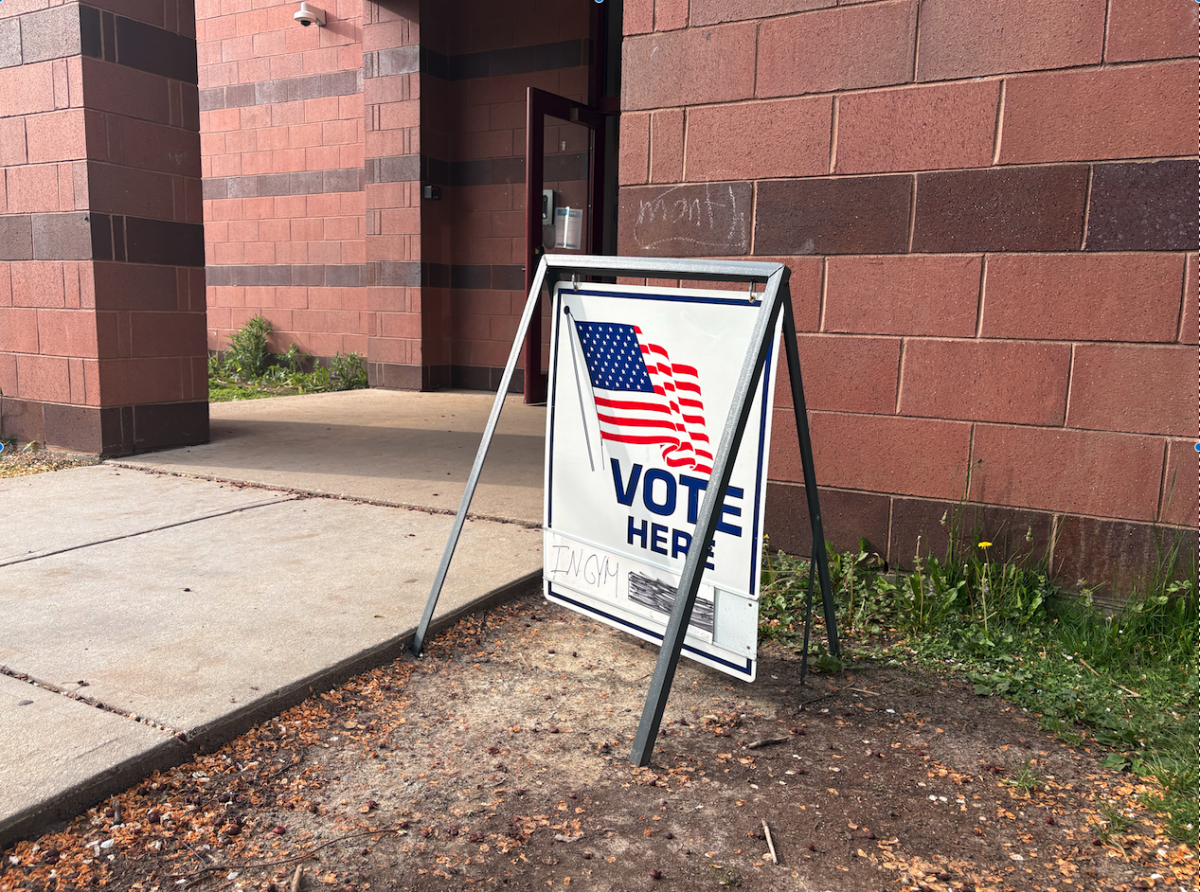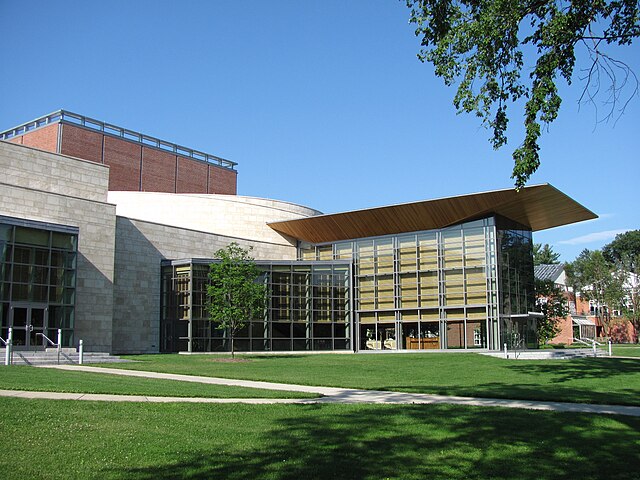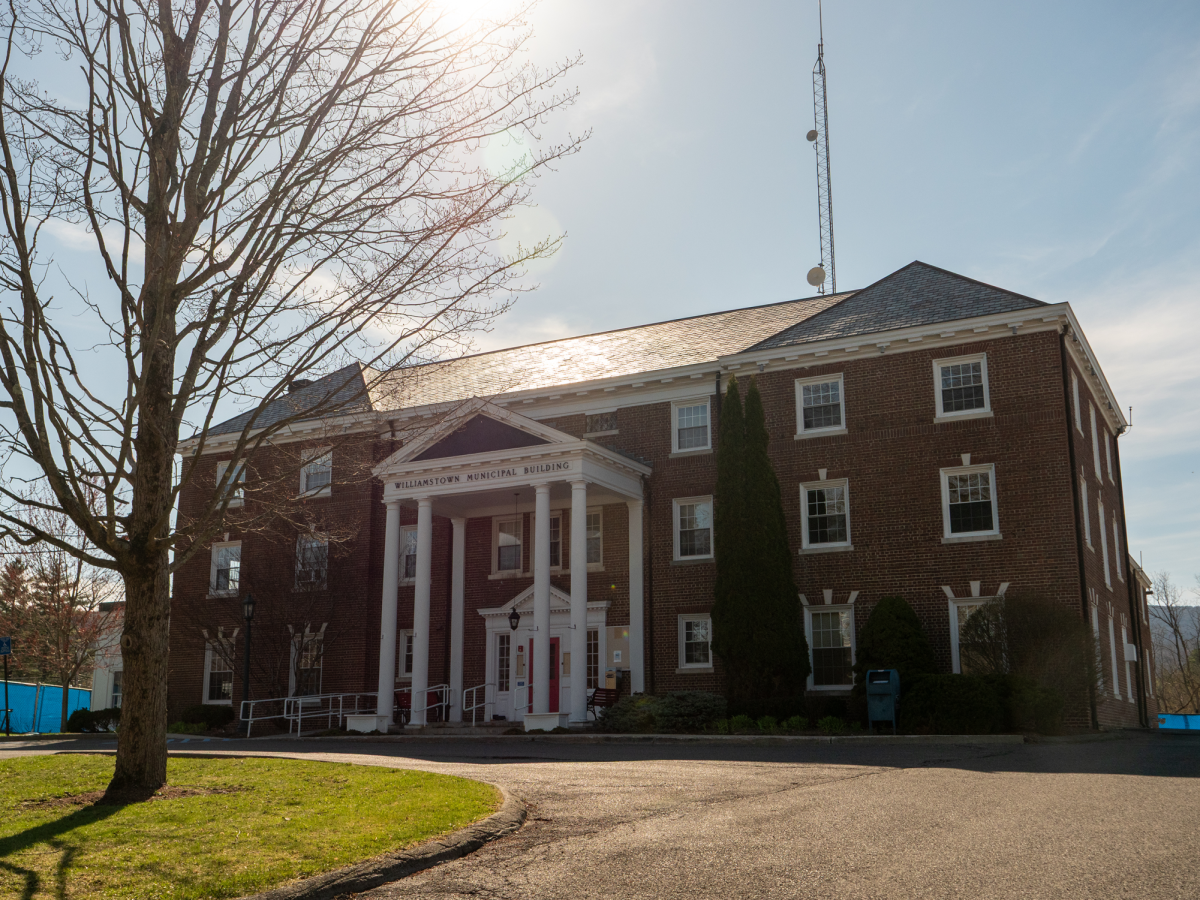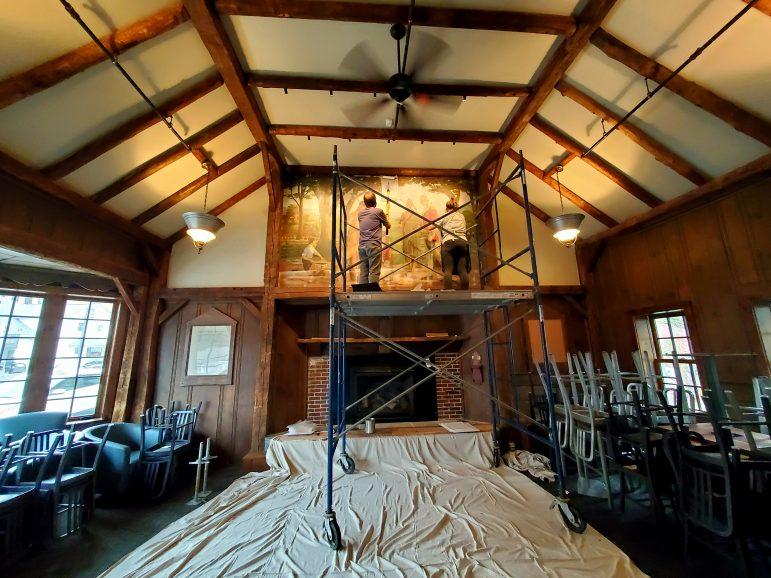
The Log murals, controversial for their stereotypical and ahistorical representation of Indigenous people, will be removed from the Log beginning tonight. The decision, which President Maud S. Mandel first announced on Sept. 17 in an all-campus email, follows years of discussion surrounding the murals and various attempts to address and reckon with their presence.
“The murals, found on the walls of the Log, attracted concern because of the artist’s portrayal of Native Americans and of the relationship between the Mohawks and the British,” Mandel wrote in the email. “This fall we’ll relocate the murals and associated fixtures out of the Log to the Library’s Special Collections facility. There, the items can be preserved as artifacts for scholarly study, rather than displayed as decorative objects in our alumni and community gathering-space.”
One of the murals in particular, found in the Log’s Black Room, has spurred much of the controversy ever since the Log reopened after its 2015 renovation. The mural, created by a non-Indigenous artist in 1942, depicts Ephraim Williams and Colonel Titcombe meeting with Mohawk Leader Hendrick Theyanoguin and other Mohawk tribal members before the 1755 Battle of Lake George. Soon after the Log’s reopening, community members raised concerns that the mural’s portrayal of Native Americans was stereotypical and inaccurate, and that it mischaracterized the relation between the British colonists and Mohawk people.
Recent history of the mural
When some community members responded negatively to the murals when the Log reopened after renovations in 2015, then-President Adam Falk temporarily covered the murals and created the ad-hoc Committee on Campus Space and Institutional History. The committee was chaired by Professor of History Karen Merrill, and consisted of faculty, staff and students. The group was tasked with providing a recommendation for how to address the mural, as well as considering broader issues of space, art and inclusion at the College.
In May 2016, the Committee issued a report on the mural. They recommended “that the College keep the mural and take responsibility for contextualizing it. The latter should involve providing some textual explanation within the Black Room of the Log to help viewers understand the mural and the history of the mural; supporting the website begun by the committee to serve as a resource for further information about the mural and the Log; and encouraging pedagogical and artistic use of the work and the room,” according to the report. The document added that the College might consider redecorating the Log in order to make it “more into line with the current student community.”
In deliberating its decision, the committee consulted members of the College community. The report noted that, “while hardly a statistical sample, of the 55 handwritten responses about the Log mural in notebooks we left in [the] Log, only 3 responses indicate[d] the mural should be removed from the space, and responses at the forum on April 24 [2016] uniformly supported keeping the mural uncovered and in the Log.”
In September 2019, the College followed through with the recommendations by hanging a plaque with the title “Considering the Log Mural” next to the mural in the Black Room to provide context and facilitate critical thinking about the mural. The plaque added historical contextualization to the mural and explained that the artist, Stanley Rowland, “often included racially stereotyped images of Native people” in his works.
“I think we believed at the time that there were ways the college could imagine using the Black Room and the Log as a whole to make connections between past and present,” Merrill wrote in a recent email to The Record. “That strikes me now as rather overly hopeful.”
A reconsideration
Mandel’s decision to have the murals removed was reliant on a number of factors. “It was always on my mind that maybe the solution that had been proposed wasn’t going to reach the aims aspired to in that report,” Mandel said in an interview with The Record.
“To use a pub as a teaching space was not really the best place or way to engage with that history,” Mandel said. “It made sense for Williams to treat the murals and associated fixtures as artifacts that are subject to critical scrutiny, and so it became clear that such critical thought was not going to happen in that space.”
“There has been a call for Williams to think more critically about its institutional history and so we’re coupling [that with] the movement of the removal of the murals,” Mandel said. “They’re separate but parallel processes.”
Merrill said she supports Mandel’s decision. “From the standpoint of today, after seeing two restaurant establishments in that space, our hopes that it could become a place to reckon with institutional history seems a little naive,” she said. “At the time, it was still a little unclear what the Log was exactly, given its history.”
“I don’t think [Mandel’s decision is] so much a contradiction as it is engaging some of the principles we set forth in our second report,” Merrill continued, referencing the second of two reports the committee made, which focused more broadly on space, history and inclusion on campus.
Professor of History Christine DeLucia has taught classes that engage with the Log murals, even bringing groups of students into the Log to consider the works and how they are contextualized in their given space. The setting of the Log, currently a branch of Ramunto’s Pizza, often came up as a point of critical discussion, DeLucia said.
“People go [to the Log] to eat pizza and drink beer and hang out, and it’s really not a place where people are supported in having a deep critical conversation… It’s a very different experience from going to the archive or special collections, or even the art museum,” DeLucia said. “The setting…in the Log was never really going to be conducive to a reflection about these issues.”
DeLucia has been involved with various projects of reckoning with historically problematic monuments in the Northeast. “I’d like to emphasize that monuments and representations in space like this change,” she said. “That [change] is often a very organic process — that a community goes through some form of reflection about whether the imagery that surrounds us today reflects the values or commitments that we wish to have, or whether it’s time to move on to other forms of iconography.”
“I’m glad that this process has been accelerated this summer,” DeLucia added.
Removal and relocation
Once the murals are removed from the Log, they will be relocated to the College’s off-campus shelving facility, Head of Special Collections Lisa Conathan explained. As historical artifacts, they will be handled there by Special Collections and will remain available to researchers who wish to use them. They will also be digitally accessible.
The process of removing the murals has already begun, and Mandel told the Record she hopes the removal will be complete by the end of the semester.
“The Williams College team directly involved with the project are Executive Director for Planning, Design, and Construction Rita Coppola-Wallace, and myself,” Senior Facilities Project Manager Michael Wood wrote in an email to the Record. Some local companies are also involved in the removal process.
Wood described the challenges of the mural removal project. “The work to remove the murals themselves isn’t very complex, but coordination of the work in order to minimize impact and disruption to Ramunto’s operations required planning of work activities with specificity in terms of hours and not days,” he said. “Additionally, due to the fact that the existing plaster in The Log is known to [contain asbestos], the project needs to be treated as an asbestos abatement activity.”
Wood explained that different murals will be removed from the Log at different times. Some will be removed from the main interior space of the Log by Wednesday night, while the two murals in the Black Room, including the one which has sparked controversy, will likely be removed by the end of next week.
Associate Conservator of Paintings at the Williamstown + Atlanta Art Conservation Center (WACC) Maggie Barkovic described the removal process in an email to the Record. She explained that a protective layer of paper is applied to the surface of the mural prior to removal to prevent paint loss.
“After applying the protective facing, the paintings will be removed slowly using tools to gently lift and separate them from the wall,” she explained. “We typically use small spatulas and an array of ‘pizza peels’ to separate murals from the wall, using the lowest peel angle that is possible to minimize any unwanted forces on the paint film; it’s a fitting tool to remove the murals at Ramuntos.”
“Afterwards, any wall adhesive adhered to the reverse of the canvases will be removed,” Barkovic continued. “Then the paintings will be rolled onto sonotubes and wrapped prior to being placed in an environmentally controlled storage facility.”
Wood added that transportation of the murals to the shelving facility will be arranged with Special Collections staff once the murals are ready to be stored.
Special Collections will maintain quality digital photographs of the murals, so that they can be made virtually or digitally accessible to researchers. “I anticipate that most people who want to know about the mural will use the photographs, and it will be in rare instances that the actual paintings will be taken out,” Conathan explained.
Unbound, the College’s digital repository of institutional artifacts might also hold a publicly available digital version of the murals. “If we anticipate that a lot of people would ask for the photos then we would put it in Unbound,” Conathan said. “That would provide an opportunity for us to provide some authoritative information about it.”
“I think the photos will be used with some frequency,” Conathan predicted. “Really what it is, is a tool to facilitate dialogue about institutional history and about representation on campus and it has done that with some frequency recently.”
A broader reckoning
The removal of the mural demonstrates a broader attempt by the College to address its history and make Williams a more inclusive space. In Mandel’s Sept.17 email, she specifically addressed matters of the College’s institutional history and its destructive impact on Black and Indigenous communities.
The email also described other ways the College is working towards racial justice and inclusion, and contextualized itself within “accounts of racial violence, voter suppression, the uneven impact of COVID-19, and the Black Lives Matter movement.”
The Log mural removal is a part of these endeavors, but it is by no means the only one. In the same email, Mandel stated that as part of next steps in engaging with the College’s history of Indigenous displacement and colonization, they have reached an agreement to “provide office space on Spring Street to the Stockbridge-Munsee Mohican Tribal Historic Preservation Extension Office,” who were pushed out of the area in the late 17th and early 18th centuries.
Mandel said she was glad that “we can offer the Stockbridge-Munsee Community a space in the region from which they can do important preservation work for their people,” and that she was “excited about the potential for collaboration with them on programs that will complement our growing investment in Native American and Indigenous studies.”
While the College’s removal of the mural and establishment of a relationship with the Stockbridge-Munsee Mohican people are important steps in reckoning with the institution’s complex history, DeLucia said that there is still much to be done.
“There’s a big educational process that needs to continue,” she said, expressing a desire for the College to “center the voices, desires, and goals of the tribal community, [and to]… create a welcoming and supportive environment for tribal members.”
“It seems like these are necessary steps to carrying on that larger work,” DeLucia added.





